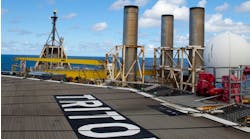Local content is now, more then ever, one of the major hurdles of theBrazilian oil and gas industry.
Local content obligations reflect the commitments undertaken by the E&P companies vis-à-vis the National Oil Agency (ANP) for acquiring local labor, equipment, and services. Under the concession system, percentages of local content serve as judgment criteria (together with signature bonuses and minimum work programs) at the bid rounds promoted by ANP for the award of onshore and offshore blocks.
Under the first presalt production-sharing agreement, such percentages were already predefined by the government – the Libra field demands 37% local content in the exploration phase, rising to 55% in the development phase and 59% after 2022.
From 2007, the ANP decided to rely upon third parties to perform inspection and certification services, and published a set of specific regulations on these subjects, including on calculation methodology. In 2013, the Agency issued new regulations to simplify the certification process aiming to make it easier to understand and apply the rules.
Major assets are now under construction for the development of important postsalt and presalt blocks, and both oil companies and service providers have been struggling with quasi-impossible obligations to deliver assets with the required quality, performance levels, and adequate budget.
Throughout the past decade, IOCs, service providers, and Petrobras have invested heavily in the training of local personnel to meet the expectations of the industry in terms of qualified services. All these efforts count, with private funding coming from the long line of interested parties.
But local content is not only about industry specialized training, and public and private investment in education, research, and development.
The entire Brazilian local content policy, which is of the essence for the development of the Brazilian oil and gas industry, has always been trusted and supported by the industry players based on the premise that the Brazilian federal, state, and municipal governments would meet their obligations to consistently invest in the fundamental education of Brazilian citizens.
Without a solid fundamental education, even the best industry training can fail. Data gathered by the World Bank and the Organization for Economic Cooperation and Development (OECD) shows that Brazil's public spending on education reaches about 5.6% of the country's gross domestic product (GDP). So it cannot be considered a "good" level of spending (defined by the OECD as 6.23%).
But, just to mention two countries that are known to have good education systems, it is more than South Korea and Canada spend (respectively, 5.0% and 5.1% of their GDP). This is an indicator that it is not only the quantity spent that matters, but also the quality of expenditure. From a list of over 65 countries, even though Brazil is the 15th biggest investor in education, its education system places only in 53rd. In the last decade, according to the United Nations Development Program, Brazil spent in education over 40% more of its GDP than Japan, which is recognized as having one of the best education systems in the world.
On the other hand, it is unarguably a very lengthy process to improve education in a developing country like Brazil. It may not be investing well or it may be slowly and gradually reducing gaps in the service. The fact is that, in this context of challenge, sometimes there is lack of local content and the industry does not see any other way out but by importing qualified goods and services.
Of course it is strategic forBrazil that all oil and gas supply chains are strengthened, and that the workforce is well qualified. However, it is also clear that industry development must be pursued under sustainable entrepreneurial business standards, and not merely based on political considerations that can change quickly.
In view of the gap between capacities available and capacities required, it does not seem realistic to expect that the companies in the sector will have sufficient budgets to cope with production targets and strict local content requirements at the same time. It is difficult to predict the future, but there is no doubt that being flexible and/or approving creative tools to enable industry players to abide by the local content rules at this critical stage might benefit the solid development of the Brazilian oil and gas industry.
Danielle Valois
Bernardo Pedrete
Trench, Rossi e Watanabe Advogados
This page reflects viewpoints on the political, economic, cultural, technological, and environmental issues that shape the future of the petroleum industry. Offshore Magazine invites you to share your thoughts. Email your Beyond the Horizon manuscript to David Paganie at[email protected].


